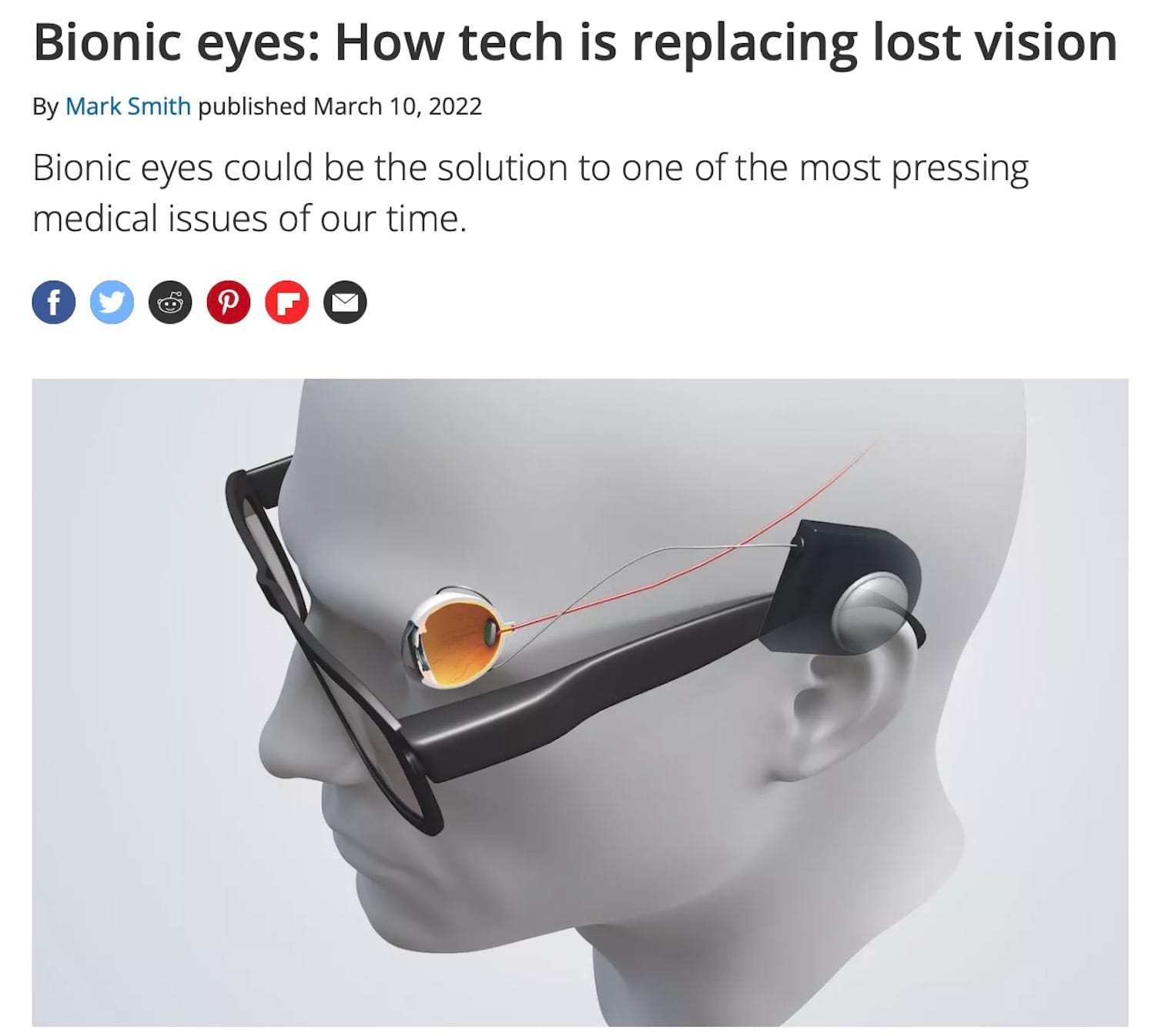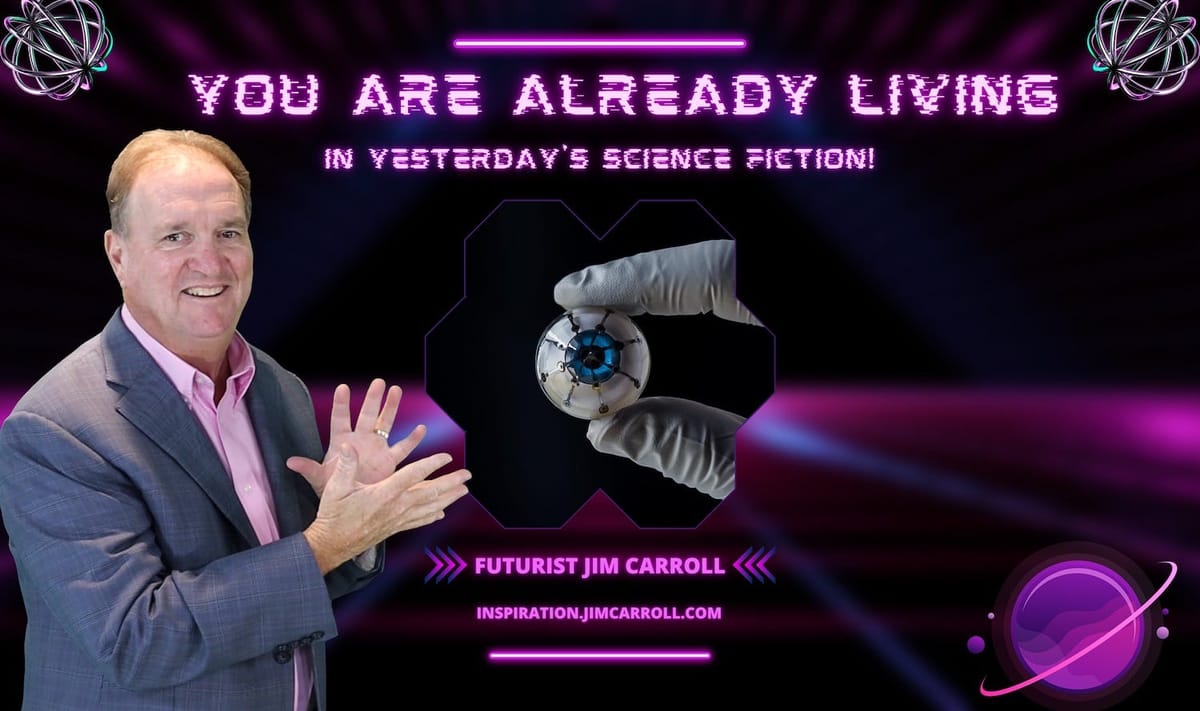The other day I drove a neighbor - a dear friend - to his appointment for his first cataract surgery. As you are reading this today, I will be driving his wife to her appointment for the very same surgery.
When waiting to meet him later post-surgery - the clinic was located at the University of Waterloo School of Optometry and Vision Science - I happened to spot a group of students huddled around tables in the main building, studying and talking, Presuming to myself that they were in the program, I wondered what types of rapid advances they would see in their field of vision science by the time they are in their 40s, 50s, and 60s.
We can only begin to imagine because we are already living in a time in which the science fiction of our yesterday has become our reality.
Cataract surgery itself is remarkably routine; I had it done almost a decade ago as an alternative to LASIK. Essentially, a small incision is made in the eye; the old lens is sucked out, and a new permanent lens is implanted. What happens, though, when that lens replacement itself becomes a hyperconnected, microchip-based intelligent vision system? What happens when we can truly give eyesight to the blind? What happens if we have full bionic eye implants that link to the optical nerve? What happens when we have heads-up-display technology integrated into said bionic eyeball so that we can enhance our vision with HUD stuff, just like we see in a modern-day airliner?
These are the things a futurist thinks about. What seems crazy is becoming routine. And after all, we can read about such advances in the news all the time.

With that in mind, consider the tremendous advances that have occurred in the science and technology of medicine overall. This is a grab bag of a few of those trends that I wrote about just a few years ago. Many are becoming real at a pace that is, I always say, staggering: our science fiction past is already in our future and is rapidly becoming a part of our today.
- technology is taking over medicine. BIo-connectivity devices such as remote blood pressure monitoring devices allow for the virtualization of many health care services ("bedless hospitals") at a much lower cost
- Google and other companies are working on a contact lens that will monitor blood sugar/glucose for diabetes patients. We are going to witness a flood of wearable healthcare monitoring technology.
- we will soon see 'smart medical implants. This will include a contact lens, surgically implanted, that will feature storage, a battery, sensors, and other electronics to aid in vision
- smart pharma with connected pills will one day be here; we will have ingestible pharmaceuticals that will report on how well particular treatments might be working. There's been a lot of work in this area, and many high-profile failures - but it will soon be common.
- we will soon see a computer chip that will diagnose infectious diseases through continuous bloodstream monitoring
- 3D printing technologies now allow us to provide customized hip replacements and other medical implants, or the printing of prosthetics for amputees
- digital twin technology is already allowing surgeons to prototype forthcoming surgeries - thereby taking on with greater confidence more complicated routines
- smart packaging allows the development of pharmaceutical/drug products that will aid in the use of the product
- digital mobile technologies are allowing many people to 'get closer to their health, by monitoring, gaining a better understanding and actively managing chronic conditions such as blood pressure and diabetes
- wearable sensor technologies (such as the contact lens mentioned above) allow for continuous monitoring of medical conditions
- personalized medicine and pharmacogenetics provide for more targeted drug and medical therapies
- patient-generated data and shared patent-edited medical records are providing for more consultative medical relationships
- 'frugal innovation' is leading to such ideas as smartphone-based medical imaging capabilities
- continued rapid advances in the cost collapse of genomic medicine have driven the acceleration of Moore's Law
- AI advances led to an ongoing decrease in the cost of medical diagnosis, including pathology slides, x-rays, retina scans, and more
- continued advances in anti-aging strategies are accelerating, aligning with the continued longevity of baby boomers who chose to live a healthy lifestyle
- inexpensive medical tests often referred to as a "lab-in-your-pocket" devices are going mainstream
- the 'exercise is medicine' trend which recognizes real methods to reverse the staggering cost of lifestyle disease
- robotic technology advances providing opportunities for those who have lost hands or limbs
There are a lot of big ideas and bold solutions.
Back to vision. Have you thought about how quickly it is changing? I have!
Over the years, I've spoken at numerous eyecare conferences and events for major eyecare companies - the highlight of which had Nikon inviting me to Tokyo to a 100th anniversary celebratory dinner which included, among others, key representatives and customers of their eyecare division. The fuure of visioncare? Here's a clip!
Not only that, but I've filmed a few healthcare trends videos along the way! The pace of scientific acceleration is - well - accelerating!
Bottom line? Science fiction?
Nope. Science fact!
Futurist Jim Carroll wrote a little book in 1996 called Good Health Online after a bout with Bell's Palsy. Many of the predictions in the book about the evolving world of healthcare, medicine, and doctor/patient relationships became true in the years to come. Sadly, a blog post he wrote in 2017, 'The Emerging Healthcare Reality Crisis," also predicted with stunning accuracy, the anti-science mindset that emerged during Covid.

